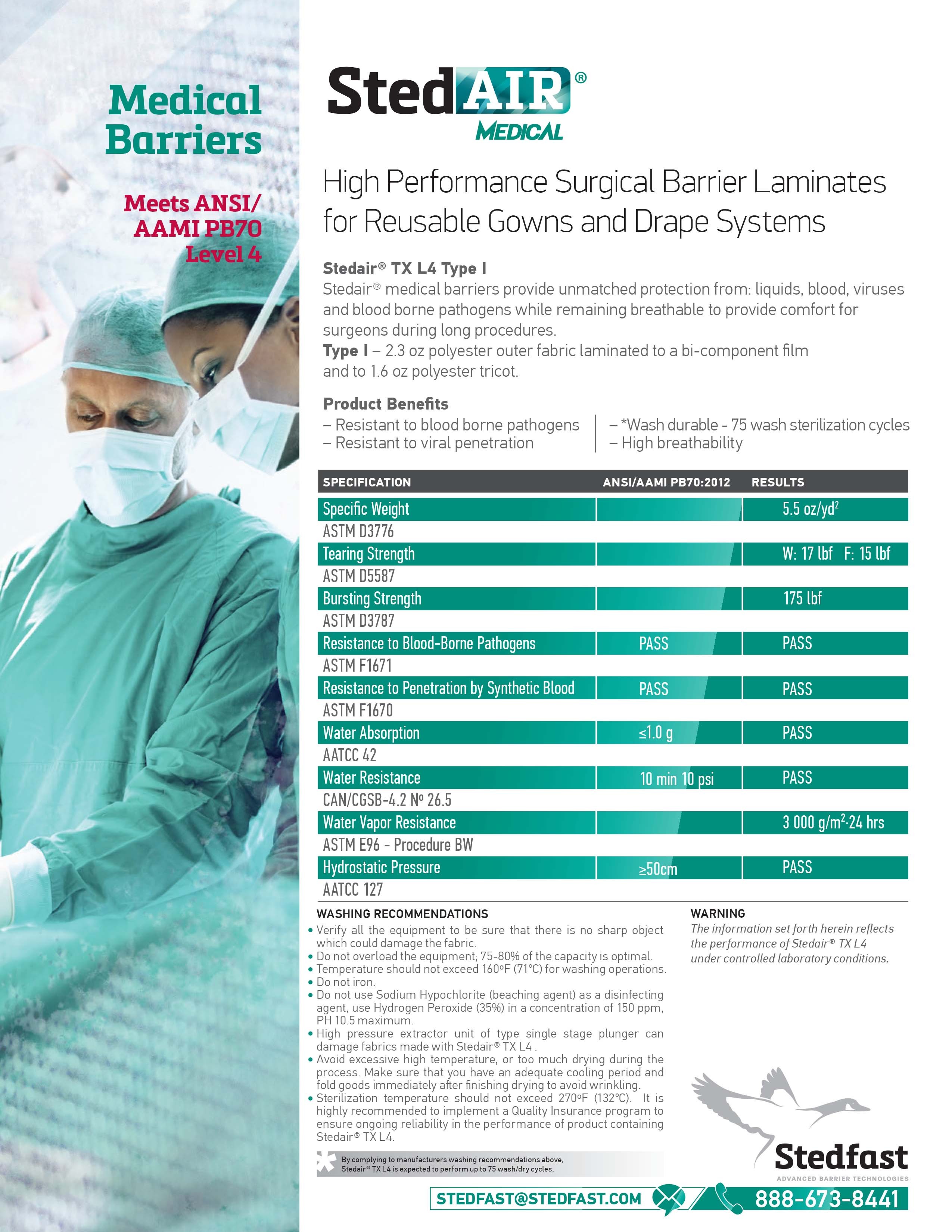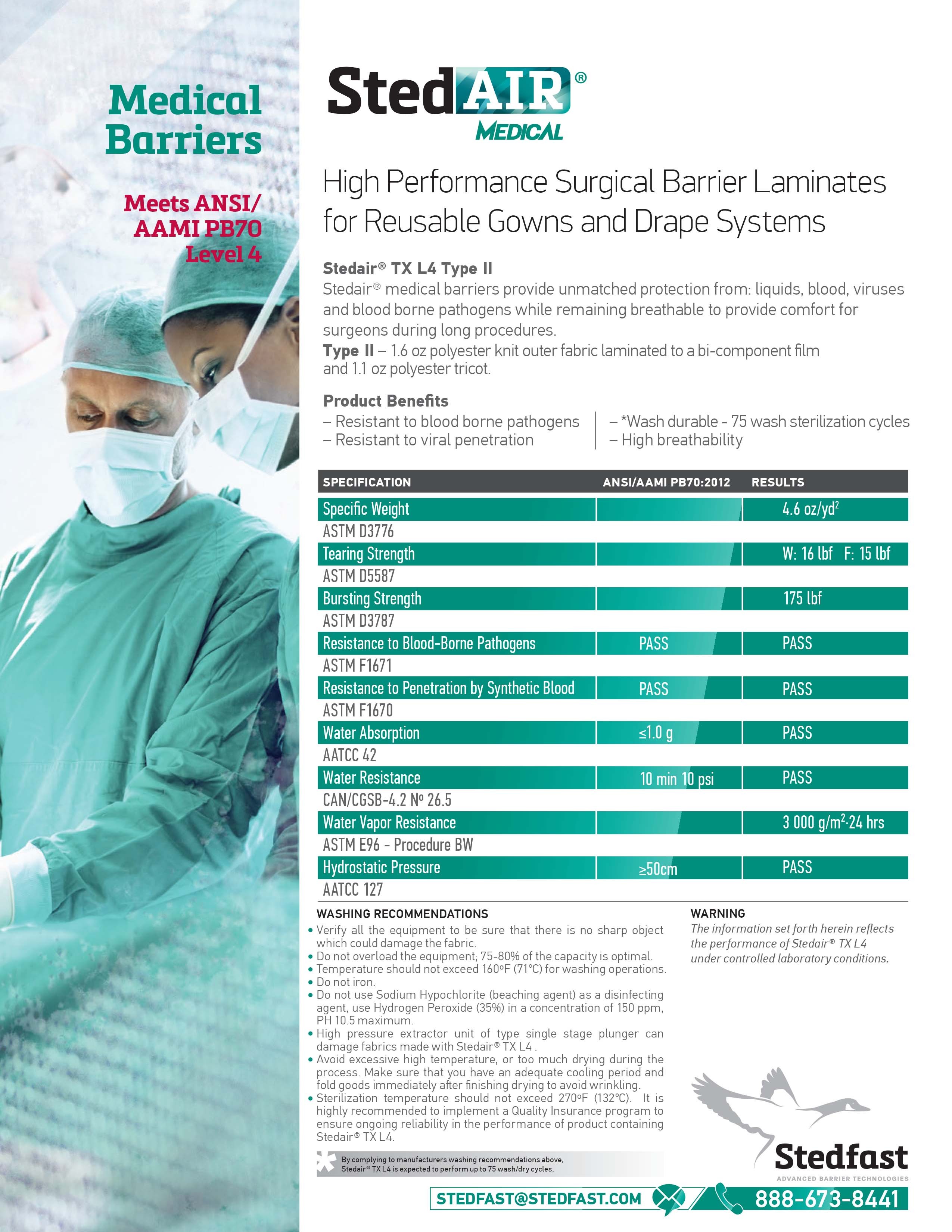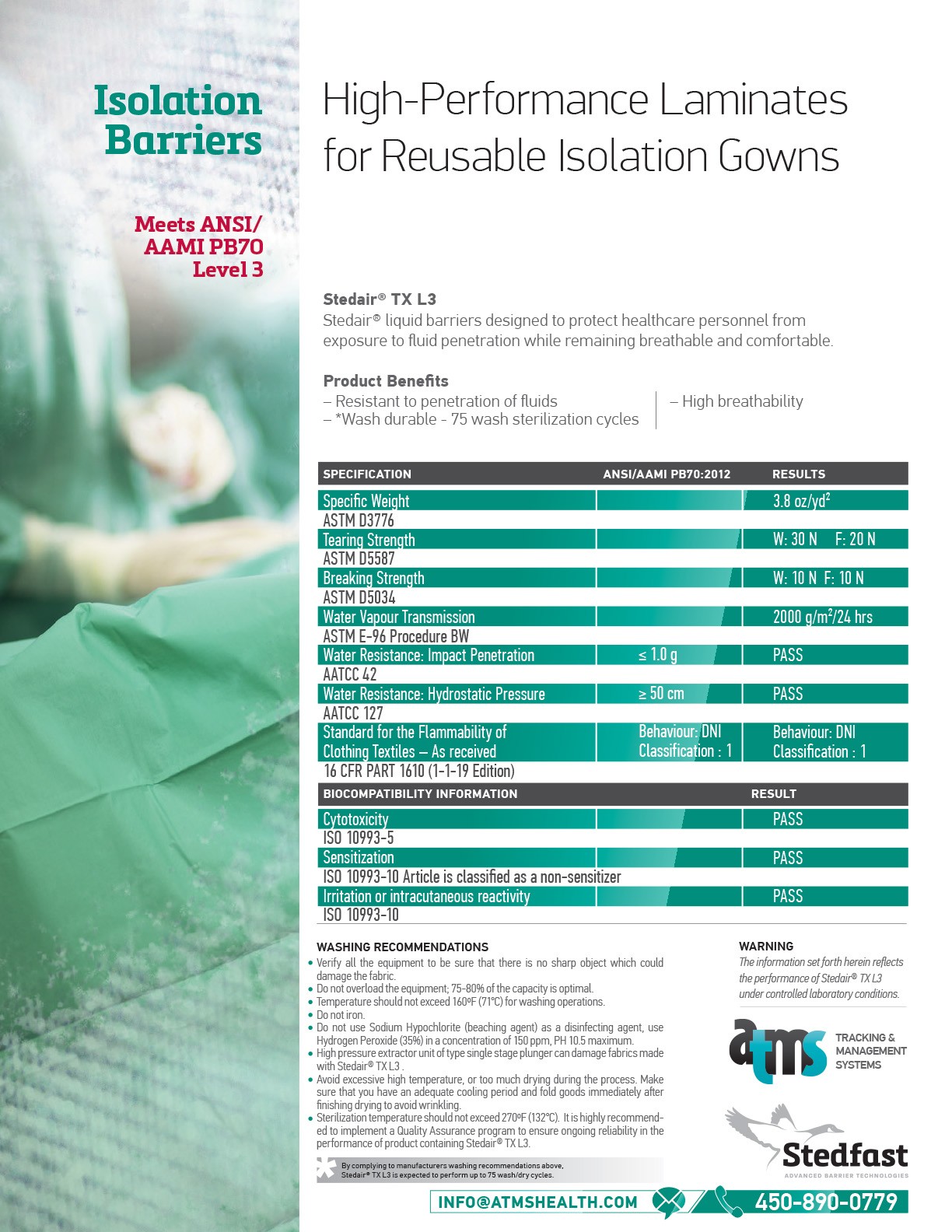High-Performance Barrier Laminates for Reusable Gowns & Drapes
Selecting the best level of protection for the standard ANSI/AAMI PB70:2012 involves understanding the critical zones of a gown and what each barrier performance level entails so that the best gown is chosen for use by healthcare workers. The critical zones of gowns comprise the front of the gown and the sleeves, both primary areas with the greatest risk of exposure to fluids and blood-borne pathogens. As the level increases, so does the need for greater barrier protection for the entire critical zone.
|
|





